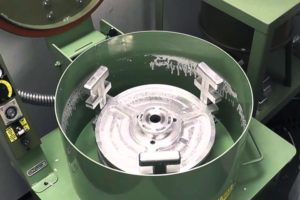Overview
Traditional spin casting uses centrifugal force to produce parts from a rubber mold. Similar to other molding processes, spin casting offer low-cost tooling and short lead times for part production. 3D printing with FDM materials technology allows manufacturers a simple, fast and affordable method to machining spin casting patterns where casting from a 3D CAD file takes only a matter of hours.

Advantage
Using FDM 3D printers, building part patterns for sand casting is easy, fast, and accurate. By replacing the machined metal patterns, the entire spin casting process can be completed within a day. FDM’s thermoplastic materials (PC and PPSF) can withstand the vulcanizing process where the mold and its patterns are tested under 149 -177 °C temperatures and pressures of 800-3.500 psi, making them ideal for pattern making. FDM produces complex, intricate shapes with no impact on time or cost and like traditional spin casting, produces multiple parts per cycle. 3D printed spin casting is laborless, automated and produces thousands of parts made of metal, plastic or wax in a single day.
Process
FDM patterns can be made from a casting’s 3D CAD data without the need for further modifications. Molds are formed by placing patterns between disks of uncured rubber, then a vulcanizer applies heat and pressure to cure it. In a few hours, the mold comes out firm yet flexible and is loaded into a spin casting machine. This process starts with liquid metal, plastic or wax being loaded into the rotating mold. Pressure causes the mold cavity to fill and solidify creating the desired result. Printing with FDM, molds and parts can be cast within hours, resulting in a simple, affordable, and efficient method for prototyping or production.